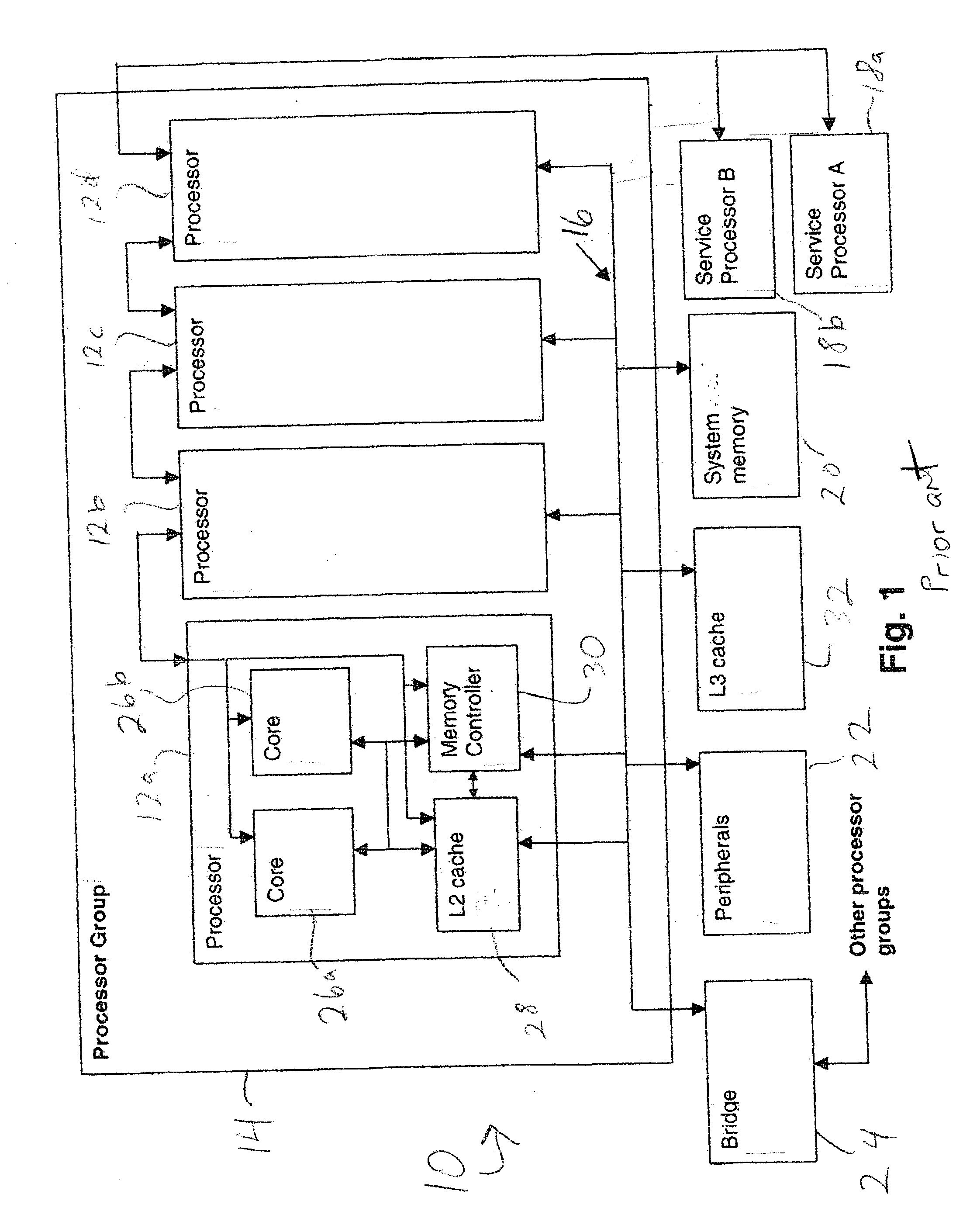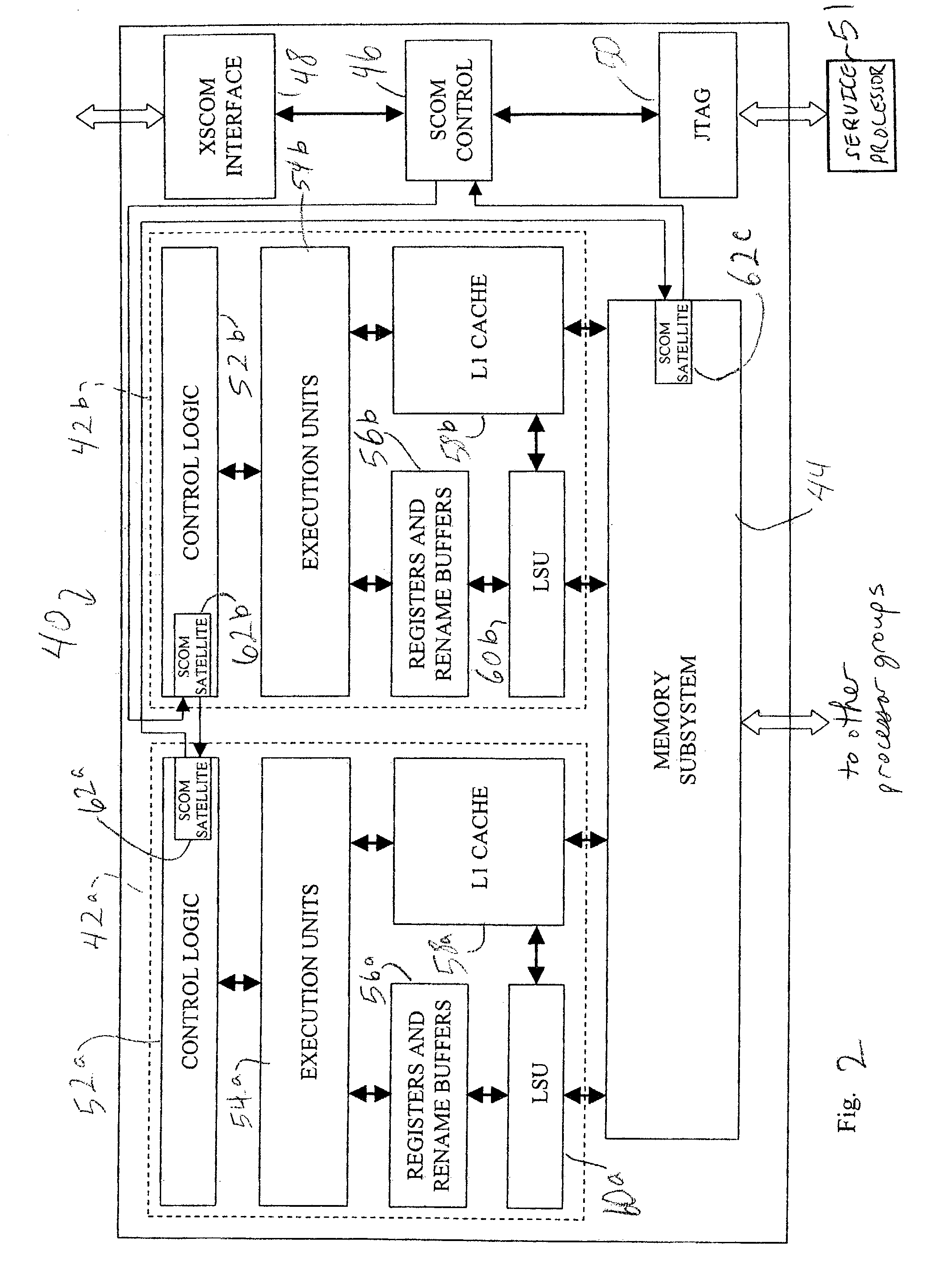Cross-chip communication mechanism in distributed node topology
a communication mechanism and distributed node technology, applied in the field of computer systems, can solve the problems of large problem, long boot time, and excessive time consumed by the overall system
- Summary
- Abstract
- Description
- Claims
- Application Information
AI Technical Summary
Benefits of technology
Problems solved by technology
Method used
Image
Examples
Embodiment Construction
)
[0024] With reference now to the figures, and in particular with reference to FIG. 2, there is depicted one embodiment 40 of a processing unit constructed in accordance with the present invention. Processing unit 40 is preferably constructed as a single integrated-circuit chip, and is generally comprised of two processor cores 42a and 42b, a memory subsystem 44, a scan communication (SCOM) controller 46, an external SCOM (XSCOM) interface 48, and a JTAG interface 50 connected to a service processor 51. Processor cores 42a, 42b and memory subsystem 44 are clock-controlled components, while SCOM controller 46, XSCOM interface 48 and a JTAG, interface 50 are free-running components. Although two processor cores are shown as included on one integrated chip, there could be fewer or more.
[0025] Each processor core 42a, 42b has its own control logic 52a, 52b, separate sets of execution units 54a, 54b and registers / buffers 56a, 56b, respective first level (L1) caches 58a, 58b, and load / sto...
PUM
 Login to View More
Login to View More Abstract
Description
Claims
Application Information
 Login to View More
Login to View More - R&D
- Intellectual Property
- Life Sciences
- Materials
- Tech Scout
- Unparalleled Data Quality
- Higher Quality Content
- 60% Fewer Hallucinations
Browse by: Latest US Patents, China's latest patents, Technical Efficacy Thesaurus, Application Domain, Technology Topic, Popular Technical Reports.
© 2025 PatSnap. All rights reserved.Legal|Privacy policy|Modern Slavery Act Transparency Statement|Sitemap|About US| Contact US: help@patsnap.com



